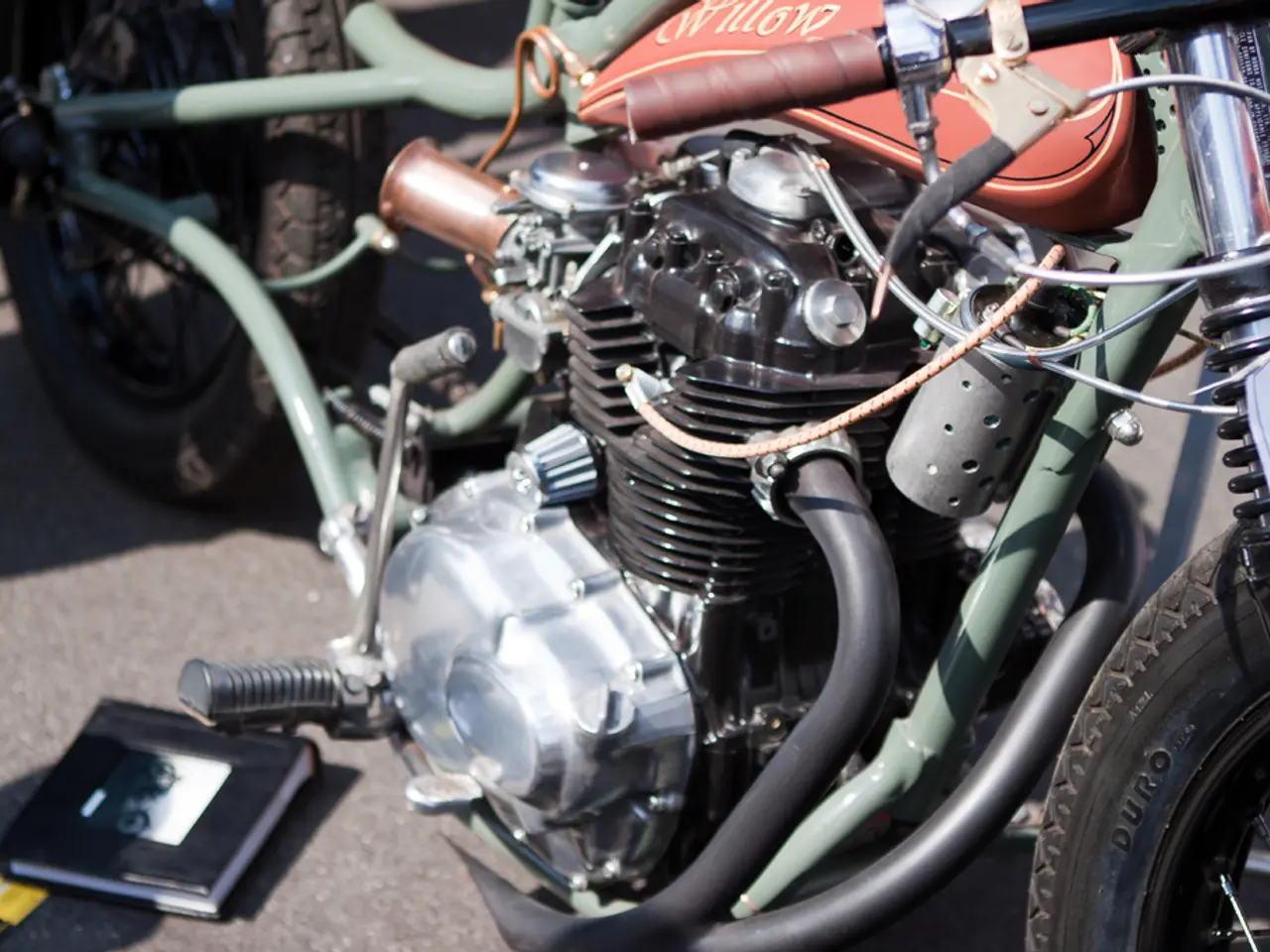A Comparative Analysis: Triumph Thrust 400 versus Royal Enfield Continental GT 650 - Reviewing Prices, Specifications, and Key Features Side-by-Side
In the world of motorcycling, two standout models have been making waves - the Triumph Thruxton 400 and the Royal Enfield Continental GT 650. Both bikes offer unique experiences, catering to different riding preferences.
Power and Performance
The Triumph Thruxton 400 houses a 398cc single-cylinder, liquid-cooled engine, producing approximately 41.4-42 hp at 9,000 rpm and 37.5 Nm torque at 7,500 rpm. On the other hand, the Continental GT 650 boasts a 648cc parallel-twin, air-oil cooled engine that generates 46.3-47 hp at 7,150-7,250 rpm and 52.3 Nm torque at around 5,150-5,650 rpm. Both bikes come equipped with a 6-speed gearbox.
Weight and Size
Weight plays a significant role in the dynamics of a bike. The Thruxton 400, with a weight of 183 kg, offers a better power-to-weight ratio, contributing to nimble handling. In contrast, the Continental GT 650, weighing 214 kg, provides a more relaxed cruising character. Both bikes share a similar seat height of 795 mm (Triumph) and 793 mm (Royal Enfield).
Chassis and Suspension
The Thruxton 400 employs a hybrid spine/perimeter tubular steel frame, coupled with modern suspension setup: 43mm upside-down front forks and a rear gas-charged monoshock featuring an external reservoir and preload adjustment. The Continental GT 650, however, uses a double cradle steel frame developed with Harris Performance, with telescopic front forks and twin gas-charged rear shock absorbers with adjustable preload.
Brakes and Wheels
Both bikes come with disc brakes and ABS. The Thruxton 400 has a 300mm front disc with a radial 4-piston caliper and a 230mm rear disc, running on 17-inch cast alloy wheels (tyres 110/70 front, 150/60 rear). The Continental GT 650, on the other hand, boasts larger discs: a 320mm front and a 240mm rear, riding on 18-inch cast alloy wheels with narrower tyres (100/90 front and 130/70 rear).
Technology and Features
The Thruxton 400 offers modern tech such as a slip and assist clutch, liquid cooling, and a more aggressive cafe-racer styling including a front cowl. The Continental GT 650, while more traditional, offers classic twin-cylinder character and a digital ignition system.
Price
The Triumph Thruxton 400 is priced lower, around ₹2.74 lakh ex-showroom, catering to riders who want a cafe racer with modern tech, nimble handling, and a lighter feel, without stretching their budget too far. The Royal Enfield Continental GT 650, priced higher at approximately ₹3.25 lakh ex-showroom, is for those who crave authentic twin-cylinder character, timeless design, and a more relaxed cruising style, even if it comes with extra weight and cost.
In summary, the Thruxton 400 favors lightweight modernity, sharper handling, and more aggressive styling with a single-cylinder high-revving motor at a lower price point. The Continental GT 650 offers a larger twin-cylinder engine with more torque, classic authenticity, relaxed ride, and more substantial braking and wheels but at a heavier weight and higher cost.
Sports enthusiasts often face a dilemma when choosing between the Triumph Thruxton 400 and the Royal Enfield Continental GT 650, two standout motorcycles in the sports category. Both offer unique experiences, with the Thruxton 400 favoring lightweight modernity, sharper handling, and more aggressive styling at a lower price point, while the Continental GT 650 provides a larger twin-cylinder engine with more torque, classic authenticity, relaxed ride, and more substantial braking and wheels, but at a heavier weight and higher cost.







